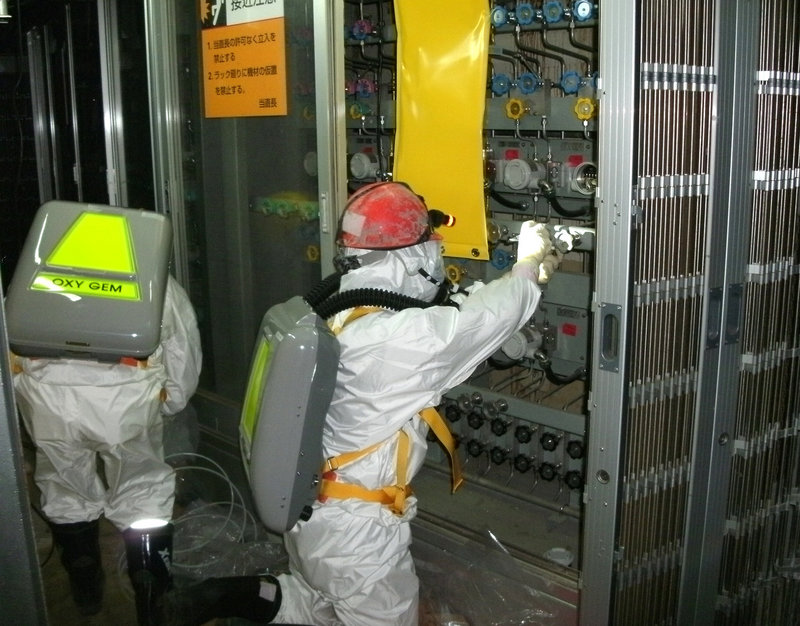TOKYO – One of the reactors at Japan’s crippled nuclear power plant has been damaged more severely than originally thought, officials said Thursday, a serious setback for efforts to stabilize the radiation-leaking complex.
Repairs to monitoring equipment revealed the new data, which also showed that the water level in the core of Unit 1 at the Fukushima Dai-ichi plant is much lower than previously thought, leaving the portion of the fuel rods still intact fully exposed. Other fuel has slumped to the bottom of the pressure vessel and is thought to be covered in water.
The findings also indicate a greater-than-expected leak in that vessel. Radioactive water pouring from troubled reactors has pooled around the complex, hindering work to bring the plant under control.
However, temperatures in the unit are still far below dangerous levels because the plant’s operator, Tokyo Electric Power Co., continues to inject new water to keep the rods cool. That radioactive water is apparently then leaking into and through the larger, beaker-shaped drywell, or containment vessel.
“The situation (in the core) hasn’t changed since (early in the crisis), and the fuel rods are being cooled by water continuously being injected into the core,” said nuclear official Takashi Sakurai.
Nuclear Industrial and Safety Agency officials said the new data indicates it’s likely that partially melted fuel had fallen to the bottom of the pressurized vessel holding the reactor core together and possibly leached down into the drywell soon after the March 11 quake and tsunami that struck Japan’s northeastern coast.
While officials said it was unlikely that the chunks of fuel were still dangerously hot or that they could melt through the concrete base of the containment vessel, they acknowledged that the level of damage could complicate plans detailed in April to bring the plant to a cold shutdown within nine months. Further examination was needed to ascertain the full extent of damage, they said.
TEPCO had adopted an unorthodox method of trying to cool Unit 1’s reactor by trying to fill the drywell with water leaking from the core, but the possibility that chunks of melted fuel had fallen and damaged part of the containment vessel raised questions about how successful this method would be. It also called into question the utility’s timeline for stabilizing the reactor.
“We have to revise the flooding method, as we need to re-examine the way we carry it out,” said TEPCO spokesman Junichi Matsumoto.
Recent temperatures inside Unit 1’s core were at the most 237 degrees Fahrenheit, well below the normal operating temperature of about 570 degrees Fahrenheit. Zirconium fuel-rod casings begin to break down at 2,200 Fahrenheit and melt at 3,900 Fahrenheit.
The new findings became available as workers fixed a water meter Tuesday after entering the building for the first time since a March 12 hydrogen explosion at the unit.
The gauge showed that the water was at least 3 feet below the 13-foot-long fuel rods, which are suspended in the pressure vessel. Some of the rods has melted away, however.
The low level of water indicates that the core of Unit 1 had a bigger breach than expected, Matsumoto said.
Send questions/comments to the editors.



Success. Please wait for the page to reload. If the page does not reload within 5 seconds, please refresh the page.
Enter your email and password to access comments.
Hi, to comment on stories you must . This profile is in addition to your subscription and website login.
Already have a commenting profile? .
Invalid username/password.
Please check your email to confirm and complete your registration.
Only subscribers are eligible to post comments. Please subscribe or login first for digital access. Here’s why.
Use the form below to reset your password. When you've submitted your account email, we will send an email with a reset code.